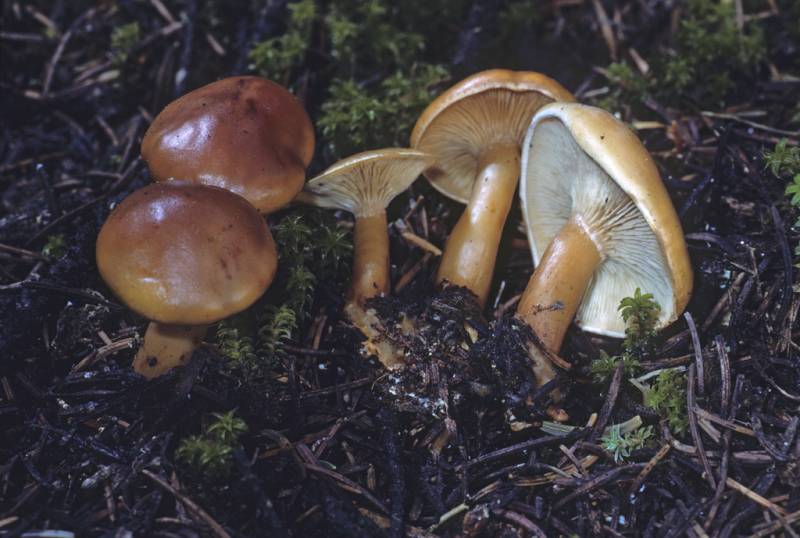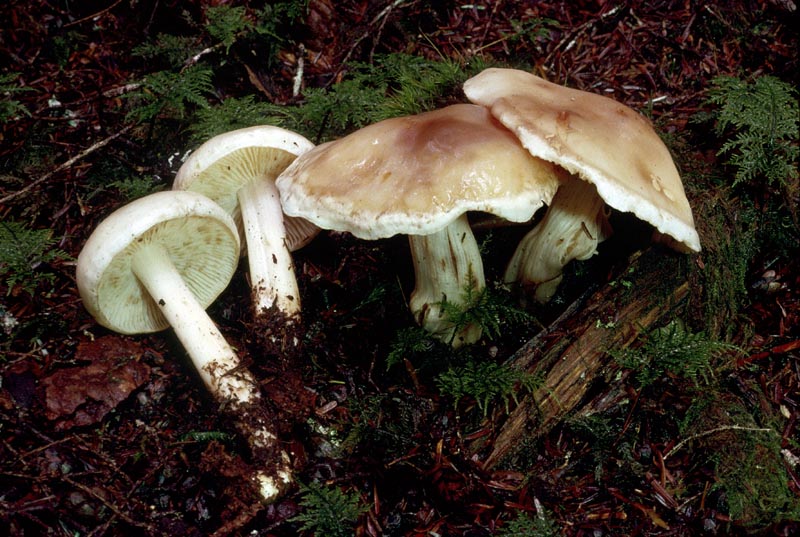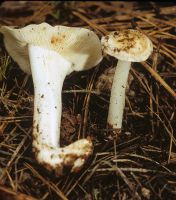Substrate: Clusters on or near rotting conifer wood
Conservation Status: Not of concern
Rhodocollybia maculata produces medium-sized to larger fruitbodies that are relatively thick-fleshed and not unlike tricholomas in appearance. Close observation of the cap reveals the reason for the species epithet, maculata, the red-brown spots that contrast with the usually cream to whitish cap. The edge of the cap remains inrolled for a long time. The gills are narrow, crowded, thin, and whitish to cream, yellowish white or pinkish, and become red-brown spotted with age. The stipe is relatively long, tapers downward, and often is deeply buried in the substrate; it is similar to the cap in color, including the spots, the interior is hollow, and the flesh tough and elastic. R. maculata is very common in the PNW, often fruiting in large numbers, in clusters on or near rotting conifer wood. It occurs from late spring until fall, and can be found even in rather dry years.
PNW Herbaria: Specimen records of Rhodocollybia maculata in the Consortium of Pacific Northwest Herbaria database
CalPhotos: Rhodocollybia maculata photos






